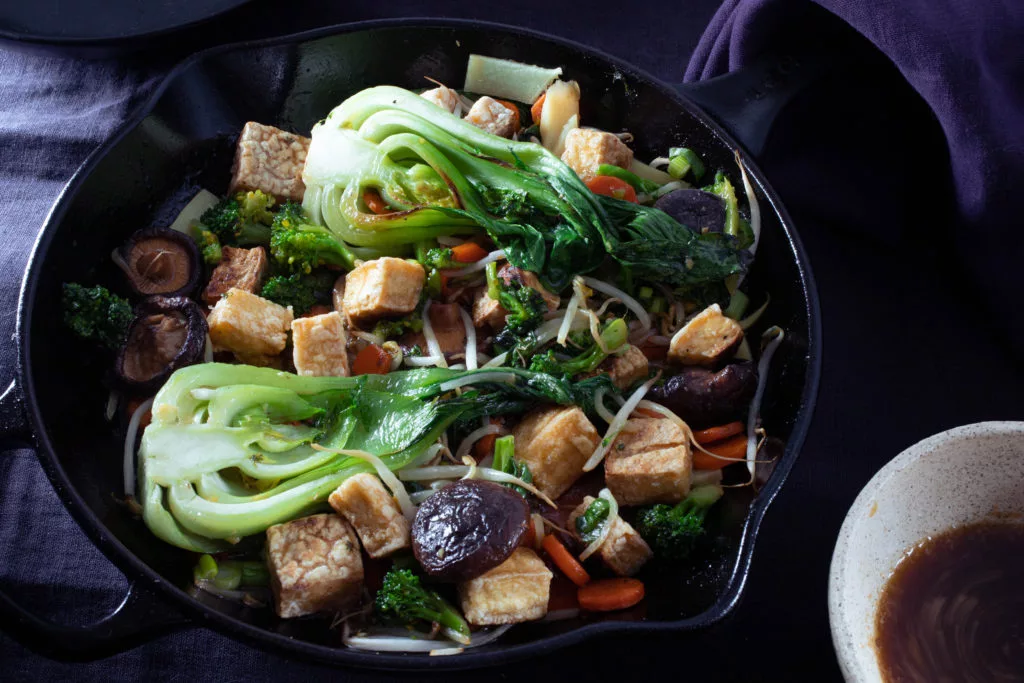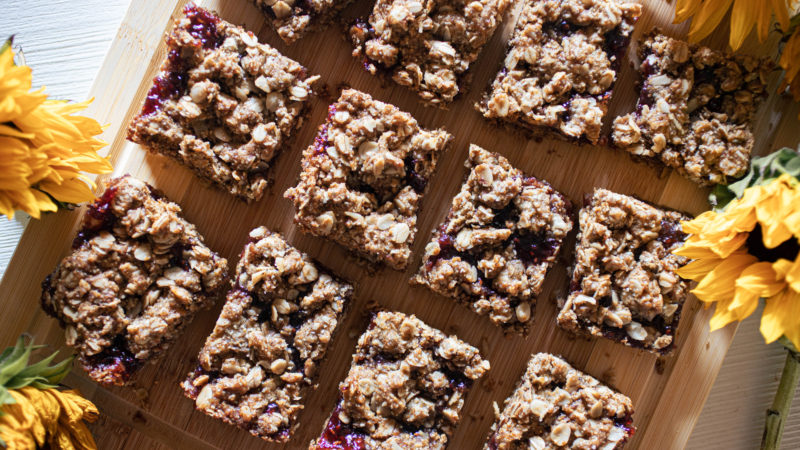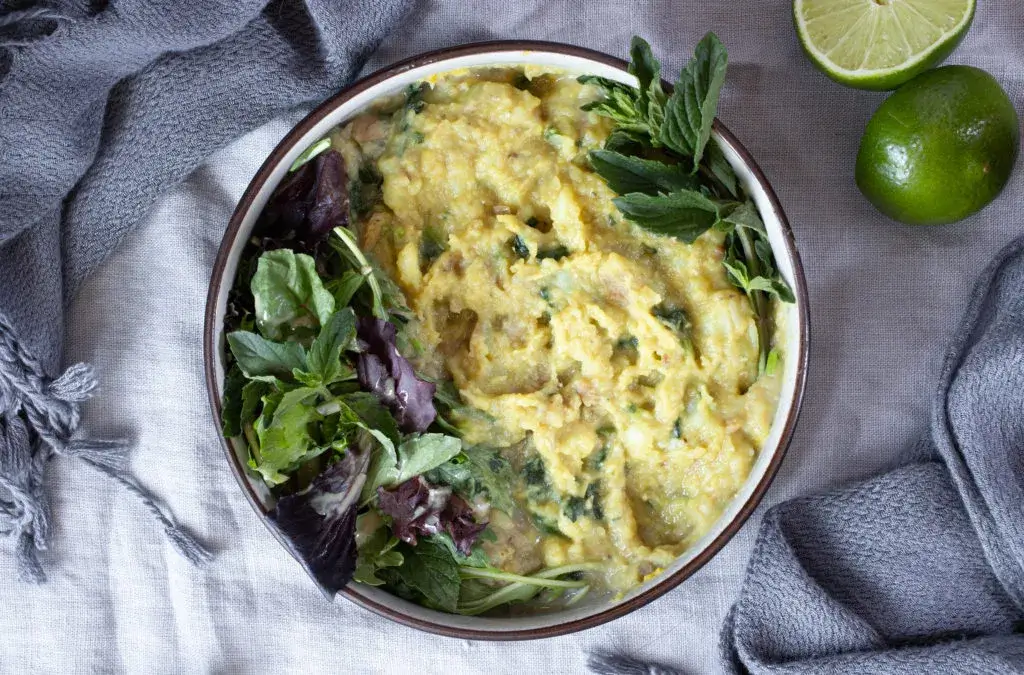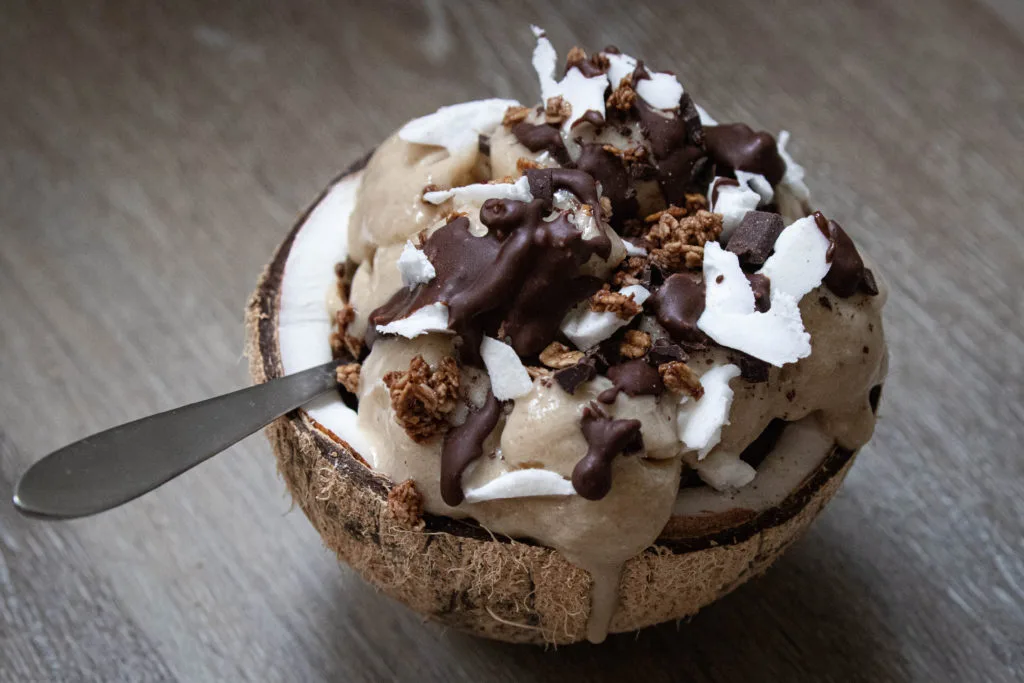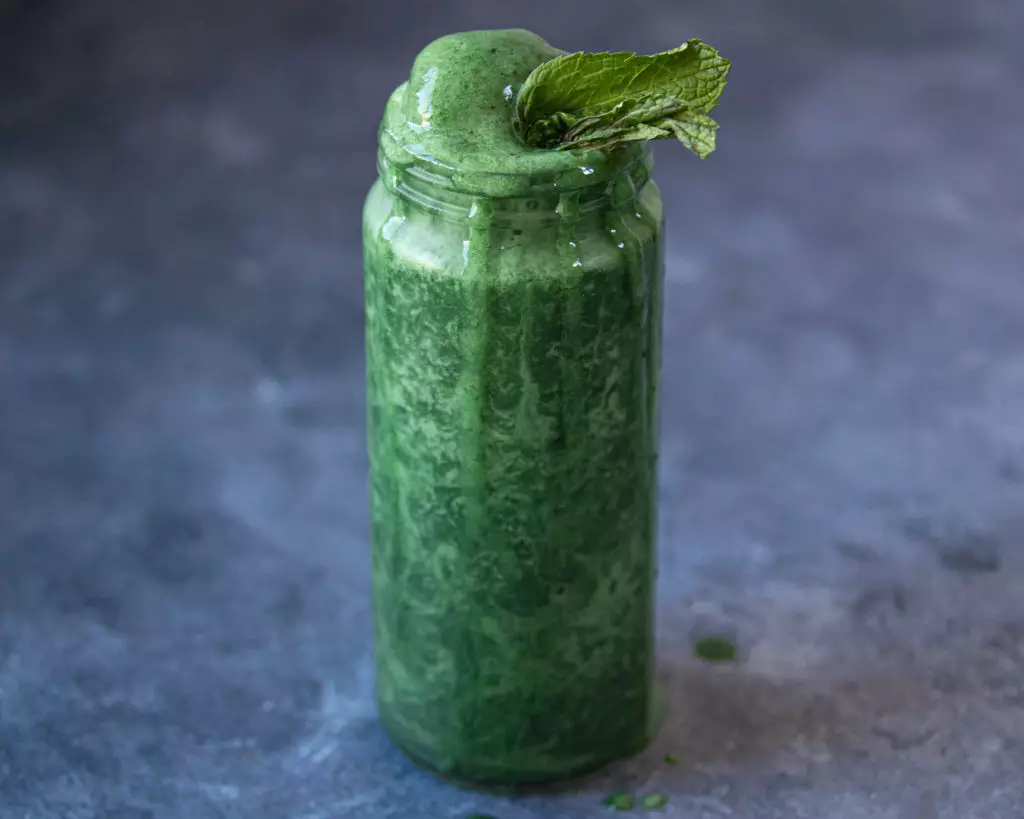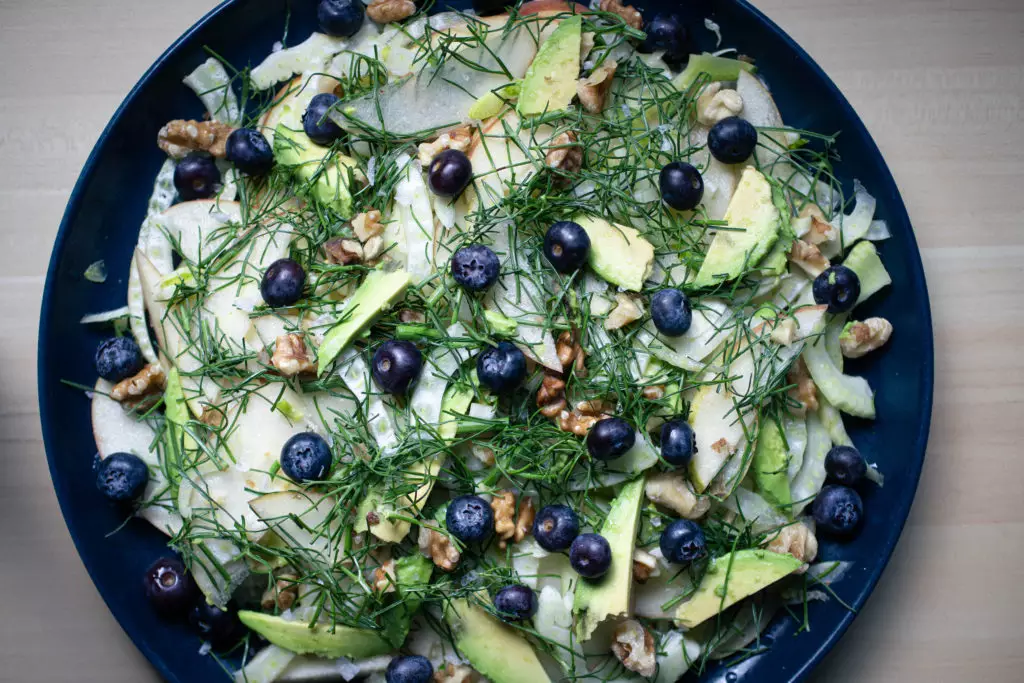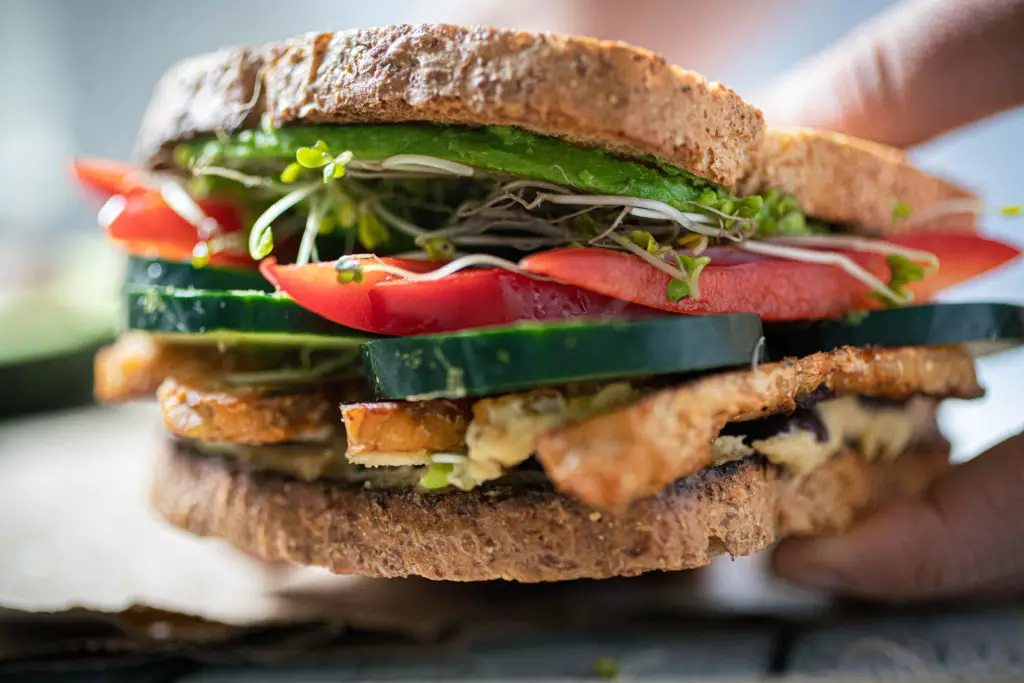Chinese Takeout-Style “Vegetable Delight with Brown Sauce” (vegan)
Vegetable Delight with “Brown Sauce” tastes just like takeout and will take your at-home stir fry game to the next level.
Brown sauce is on the milder side (if you’re looking for a more intense flavor, try the sauce from my vegan beef and broccoli). But despite its relative mildness, this sauce is well-balanced and surprisingly addictive. It’s both deeply umami and slightly sweet. Rice wine adds acidity and freshness. Cornstarch thickens it. Just pour it over some lightly cooked veggies, and let it thicken for a minute. It’s simple–but just so crave-able.
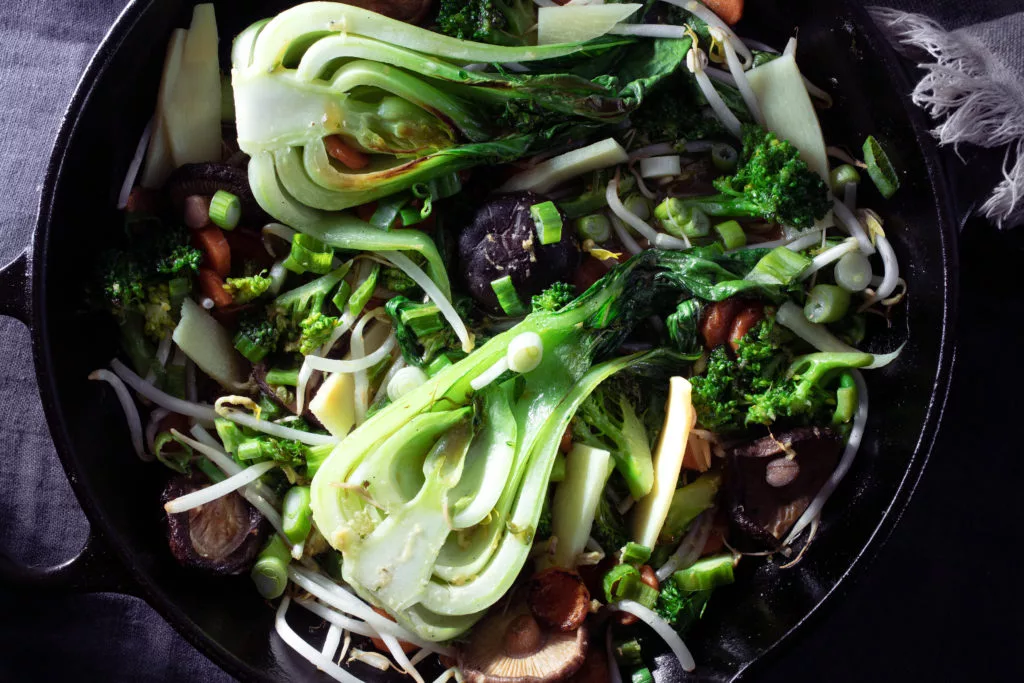
Let’s talk about how this Chinese-Style Vegetable Delight with Brown Sauce comes together. Scroll down further for more tips on how to make sure your stir fry ends up crisp and perfect (no soggy veggies here).
Why it Works
- Mushroom broth (made by soaking a few dried shitake mushrooms for 30 minutes) provides a deep umami flavor that “brown sauce” would usually get from oyster sauce and meat-based broth.
- Coconut aminos are sweet and savory. They are a healthier (and tastier) alternative to the soy sauce and oyster sauce called for by more traditional recipes. Coconut aminos are also soy and gluten-free.
- Rice wine (mirin) provides a sweet, fresh, mellow flavor that balances out the intense umami flavors in the mushroom broth and coconut aminos. Traditionally, the type of rice wine used for brown sauces is actually shaoxing (a drier, more spicey, less sweet alcohol), but I find the mirin produces a more balanced sauce. It is also a little easier to find in normal grocery stores.
- Honey is used (in a very small amount) to slightly increase the sweetness and is fairly common in brown sauce. However, feel free to swap for maple syrup, coconut sugar, or even regular sugar if needed.
- Fresh ginger is an essential flavor in brown sauce. A microplane zester makes grating fresh ginger quick and easy, but you could also finely mince the ginger if you don’t have one.
- Black Pepper gives the sauce a little kick. I always prefer fresh ground pepper as the flavor is much better and the grind can be made coarser (as opposed to the very fine grind of most pre-ground pepper). But go a little goes a long ways. Add very slowly, and taste often. You can always add more later.
- Cornstarch is essential for thickening the sauce so you don’t end up with water-logged veggies. I believe potato starch should work as well if you prefer to use a non-corn thickener, but I haven’t tested it yet with this recipe. You may need up to 1/3 more starch if using potato starch.
When to Use Brown Sauce
Add it to tofu and vegetable stir fries like this recipe for vegetable delight with brown sauce.
Alternatively, if you just want the sauce, head over to this link in the new sauces section where you can find just the brown sauce recipe. You can pair the sauce with literally any mix of protein and veggies you happen to have. If you use harder, starchier veggies (potatoes, sweet potatoes, carrots, you may need to steam them separately first though). Basically, a good chinese-style brown sauce is perfect for getting in a huge dose of veggies, cleaning out the fridge, and generally making sure no veggies go to waste.
Don’t forget the rice 🙂
How to Make Great Stir Fry Every Time
- Make sure the skillet or wok is VERY HOT. Normally, its good to abide by the general guidance of not heating your pans on high heat (but instead on medium or medium-high). However, restauraunts typically have stoves that get far hotter than the average kitchen stove. Thus, stir fry needs a very hot skillet so the relatively soft veggies will sear but not release all their water and steam. If you don’t have a wok (like me), opt for a large, heavy-bottomed skillet. Cast iron works very well. Avoid non-stick skillets. Ensure the pan is HOT before you add the oil. THEN let the oil warm up. THEN add the veggies.
- DO NOT crowd the pan. Add the veggies a little at a time with plenty of room around them. This will ensure the pan rapidly evaporates any water the vegetables release instead of allowing the water to collect in the pan. If you’re cooking a small enough batch (1-2 people), you can usually get away with adding all the veggies to the pan (still following the rule of adding only a little at a time). If you’re cooking for more people, you will probably need to cook in batches. When one batch finishes, slide the veggies onto a plate, allow the pan to get very hot once again, then start fresh with a new batch of veggies.
- Use the right OIL. Make sure you use a high-heat safe oil (that is, an oil with a very high smoke point that will not burn, smoke, or release extra free radicals when heated to high temperatures). Refined avocado oil is my preferred oil for frying (smoke point of 520 F).
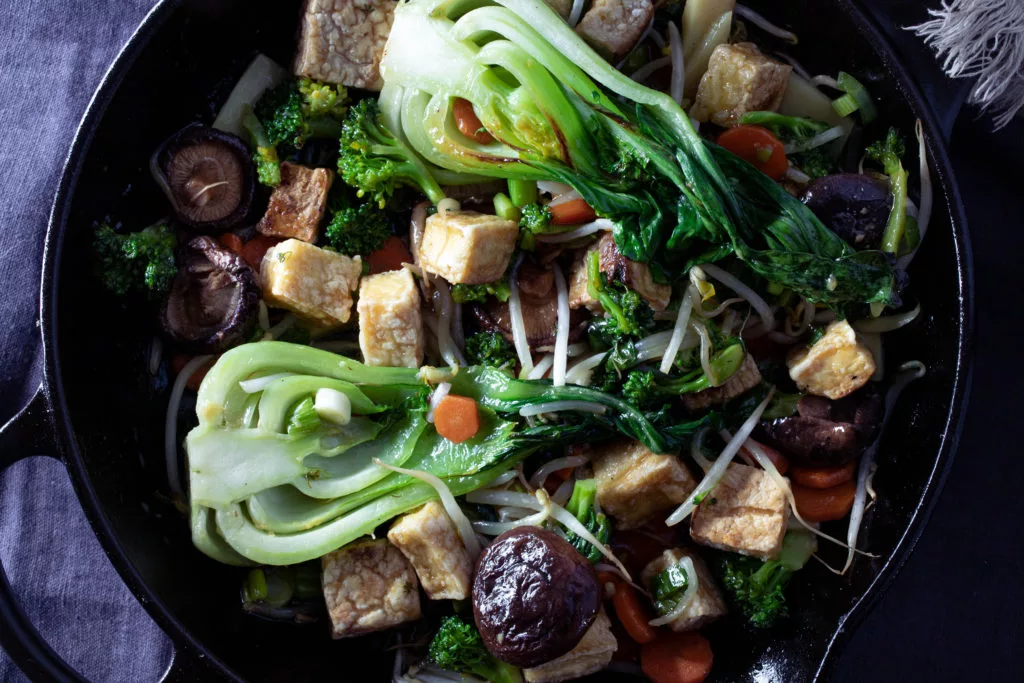
Takeout Style "Vegetable Delight with Brown Sauce"
Start by pressing the tofu.
Lay a clean towel on the counter. Then slice open the tofu package, and strain off the water. Cut the tofu into 1 inch cubes, and lay them out on the towel. Cover the tofu with another towel, and put a heavy book or skillet on top.
Next soak the mushrooms for the sauce.
Add 1/3 cup hot water and the dried shitake mushrooms to a small bowl. Set aside to soak until the mushrooms are soft. Set a timer for 30 minutes for both the tofu and the mushrooms.
Meanwhile, cover a baking sheet with parchment paper, and preheat the oven to 450 F. Prepare the stir fry vegetables while you wait.
After 30 minutes, toss the pressed tofu cubes with the cornstarch, and place it in the oven to bake for 20 minutes.
Meanwhile, scoop the mushrooms out of the warm water and set them aside for later. To the bowl with the mushroom broth, add all the remaining sauce ingredients. Set aside.
Pre-heat a heavy bottom skillet or wok over high heat. Then add 2 Tablespoons avocado or sesame oil. When it's very hot, add the carrots and let fry for 2-3 minutes. Then add half the broccoli and fry another 2-3 minutes. Add the other half of the broccoli and fry another 2-3 minutes.
When the carrots and broccoli are slightly singed, push them to the side of the pan. Add the baby bok choy halves, cut sides down, to the pan. Let sear 5-6 minutes before moving.
Add the mushrooms, and fry 2-3 minutes.
Add the water chestnuts, bamboo shoots, and mung bean sprouts. Stir. Fry one minute. Then turn off the heat. The skillet should still be quite hot. Immediately add 2/3 of the sauce, and let it thicken (1-2 minutes). Add the reserved sauce gradually as the skillet cools down. Add the tofu from the oven back into the skillet, and toss to coat with the sauce.
To make the bok choy easier to eat, you can cut the tough bottoms off the halves before plating. Then divide between two bowls, and serve with rice.
---
Ingredients
Directions
Start by pressing the tofu.
Lay a clean towel on the counter. Then slice open the tofu package, and strain off the water. Cut the tofu into 1 inch cubes, and lay them out on the towel. Cover the tofu with another towel, and put a heavy book or skillet on top.
Next soak the mushrooms for the sauce.
Add 1/3 cup hot water and the dried shitake mushrooms to a small bowl. Set aside to soak until the mushrooms are soft. Set a timer for 30 minutes for both the tofu and the mushrooms.
Meanwhile, cover a baking sheet with parchment paper, and preheat the oven to 450 F. Prepare the stir fry vegetables while you wait.
After 30 minutes, toss the pressed tofu cubes with the cornstarch, and place it in the oven to bake for 20 minutes.
Meanwhile, scoop the mushrooms out of the warm water and set them aside for later. To the bowl with the mushroom broth, add all the remaining sauce ingredients. Set aside.
Pre-heat a heavy bottom skillet or wok over high heat. Then add 2 Tablespoons avocado or sesame oil. When it's very hot, add the carrots and let fry for 2-3 minutes. Then add half the broccoli and fry another 2-3 minutes. Add the other half of the broccoli and fry another 2-3 minutes.
When the carrots and broccoli are slightly singed, push them to the side of the pan. Add the baby bok choy halves, cut sides down, to the pan. Let sear 5-6 minutes before moving.
Add the mushrooms, and fry 2-3 minutes.
Add the water chestnuts, bamboo shoots, and mung bean sprouts. Stir. Fry one minute. Then turn off the heat. The skillet should still be quite hot. Immediately add 2/3 of the sauce, and let it thicken (1-2 minutes). Add the reserved sauce gradually as the skillet cools down. Add the tofu from the oven back into the skillet, and toss to coat with the sauce.
To make the bok choy easier to eat, you can cut the tough bottoms off the halves before plating. Then divide between two bowls, and serve with rice.
